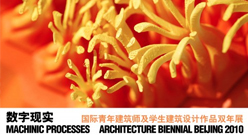-
- 09 AprHyperbody's METABODY team collaborates with the TU Delft Robotics Institute to develop the HYPER LOOP
- 26 MarHyperbody's Robotic Building (RB) team hosts Delft Robotics Institute's monthly organised RoboCafé.
- 20 FebHyperbody Guest Researcher Serban Bodea presents the Robotic 3D Printing project at the BEMNext colloquium, CiTG, TUDelft
- 19 FebAchilleas Psyllidis collaborates with the Amsterdam Institute for Advanced Metropolitan Solutions (AMS)
- 09 FebRobotic 3D printing project prototypes will be exhibited and presented at Week van De Bouw (Construction Week) in Utrecht
- 03 FebDr. Nimish Biloria lectures at the Design-Lab, Swedish School of Textiles, University of Boras, Sweden.
- 23 JanFinal Review MSc1&3 Vertical Studio: Continuous Variation (M4H, MerweVierhavens)
- 09 JanAchilleas Psyllidis and Delft Social Data Science Lab researchers present and participate at TU Delft's 173rd anniversary
- 12 DecSina Mostafavi lectures at AA school, Algorithms and Actualization Symposium
- 10 DecFootprint 15 edited by Henriette Bier (TUD) and Terry Knight (MIT) is now available online
-
-
Hyperbody exhibits educational projects at the Machinic Processes: Architecture Biennale Beijing ABB 2010.
The exhibition offers a showcase of the most progressive digital design work from 55 talented emerging architects and 27 leading schools of architecture in the world. We can see here that the use of digital tools for design has become a sweeping trend in the architecture world.
ABB Co-Curators: Neil Leach and Xu Wei-Guo
http://a-b-b-china.com/en/Venue: 798 Space, Beijing
Hyperbody
The Hyperbody educational masters program unfolds in an environment dominated by the concept of protospacing architecture. In the past year we have been able to redesign protoSPACE, our laboratory for real time data exchange between public, clients, concept designers, form designers, structural designers, climate designers, material designers, interactive designers and fabrication designers. Students typically join as role-playing experts in a non-hierarchical cooperative field. The masters projects presented here are living proof of the importance of such expert role-play in our computation and performance driven design exercises. The playing field of protoSPACE can be seen as a flat brain containing hundreds of connected swarming braincells, which can be played as an instrument. The process of evolving the architectural concept literally becomes instrumental. The physically realized protoSPACE lab together with a variety of graphical interfaces like Max/MSP and Rhino/Grasshopper are mobilized as design tools in the conceptual design phase. Typically our students design their design tools for a specific project. The process of architectural design is evolving into a fusion process of emotive and machinic processes, as students are simultaneously designing and playing their instruments in their conceptual design efforts. Their computing machines are played with emotion, with intention, with a drive to make them work and to experience the effect at the same time. Machining architecture is not a goal in itself. It forms an active part of a larger goal, which is unfolding architectural schemes that matter right here and now, an instrumental architecture that matters hopefully not only for students here, but for their peers elsewhere in the world as well.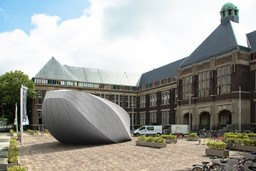
ProtoSpace 4.0. MSc2 Design Studio
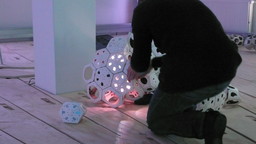
protoCology. MSc2 Design Studio
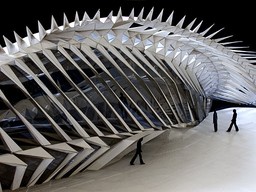
deepFORMATIONS. MSc2 Design Studio
The ubiquitous use of computational technology in the field of industrial production is significantly changing designers' approach and process. Novel design opportunities in the architectural domain proceed from a computational generative approach. Because of this, an integral understanding of the entire design process from the early generative studies until the final materialization becomes crucial.
The deepFORMATIONS Studio is a design research driven design studio, which studies automatic processes of form generation, and the auto-organization of systems through computational simulation techniques. Articulated spatial organizations of matter emerge from the interaction among the simulated system, the project scenario, and its environmental forces. The data generated from this process is subsequently regarded as a pre-material state of the future formation and is used as a basis for the parametric development of the physical spatial pattern.
The development of an interdisciplinary explorative attitude is at the core of the design research in deepFORMATIONS. Thus the studio aims an integral non-linear design approach to understand the processes of formation and materialization as complementary features of a unique process.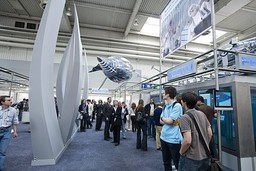
- copyright Festo AG & Co. KG, photos Walter Fogel
InteractiveWall project
The emotive InteractiveWall is a dynamic wall composed of 7 separate wall components that display real time behavior. The components bend themselves back and forth, displaying patterns of light on its skin, and projecting localized sound in response to the presence of a participant. As architecture becomes emotive, responsive, and interactive participants can influence its behavior. In that sense architecture follows a general development in society towards participation, personalization and customization, which follows the evolution of contemporary mundane technologies. It is through projects such as the InteractiveWall that we can explore the possibilities of emotive architecture. It is through projects such as the InteractiveWall prototype that architecture will come alive.
 Facebook/
Facebook/
 Twitter/
Twitter/
 RSS
RSS
